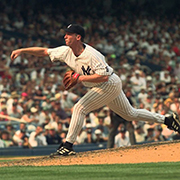|
Here4DaGangBang posted:LOL, no, I posted that here because itís loving insane, donít do this. The OSHA thread in GBS wasn't too crazy about that either. 
|
|
|
|

|
| # ? May 29, 2024 21:52 |
|
biracial bear for uncut posted:No, the listing linked does not include any mainboard whatsoever, and the cloned EINSY linked in that listing is marked out of stock with no re-stock date. You're doing a lot more research on this than I am, I'm going by memory which is pre-COVID helltime, and I'm sorry. The cloned EINSY previously was ~ $50, as well as in-stock on TriangleLab. That's where my total number came from. I absolutely don't understand why that would be a competitive price from China then if a genuine printer is like 10% more and comes with support.
|
|
|
|
I've been experimenting with the painting on uv resin method and have been getting great results for filling smaller layer lines with little effort and takes a shitload of the sanding effort away. I had to do less coats of filler primer to get better results on the helmet I'm currently working on compared to the last one. Big lines (like vertical curves) and gaps still requires spot putty though, but the cured resin does a good job at preventing you from sanding too far. Stuff is incredibly toxic though so make sure you wear a respirator. I saw on YouTube somewhere that the airbrush curing method is an incredibly bad idea, as fine particles get everywhere.
|
|
|
|
insta posted:You're doing a lot more research on this than I am, I'm going by memory which is pre-COVID helltime, and I'm sorry. The cloned EINSY previously was ~ $50, as well as in-stock on TriangleLab. That's where my total number came from. I absolutely don't understand why that would be a competitive price from China then if a genuine printer is like 10% more and comes with support. For what it's worth, even express shipped I can land that TL clone for just over $600 AUD. Add maybe ~ $100 if I really felt like adding a blinged out 32-bit MCU. OTOH a mostly assembled MKS3 in Australia is over $2,000 AUD. I have compared a TL clone side by side against a genuine machine. I couldn't tell bar the brand markings, and the owner of the farm doesn't buy the Prusa brand anymore. Not when it's a third of the price and the failure rate of the TL is lower, and the workflow is the same. But I imagine you understand, no true Scotsman...
|
|
|
|
RabbitWizard posted:Ugh, I thought I knew how to fix the lovely lines, but cleaning the z-spindle and the rails/rollers doesn't seem to work anymore. The lines next to the "A" seem like the printer isn't even trying any more That could be more of an extrusion issue than the z axis? Inconsistent heating or slipping/skipping on the extruder can cause weird layers. It might be worth checking that the extruder gear(s) aren't full of chewed up plastic and that everything is feeding well. Also watch the temps while it's printing, I know when I put a new heater on one of my printers I had to do a PID tune since the temperatures were oscillating but a few degrees up and down while I watched the temps through Octoprint.
|
|
|
|
Google Butt posted:Yeah I ordered a can and some smooth wood filler based on some stuff I googled, gonna try both on a piece of scrap and see how it goes I used wood filler on a the first helmet I printed and I've had nothing but issues with it. Any paint I add ontop seems to crack. I did add it ontop of car filler however, so whether it is reacting to that, or I added things too thick or what I don't know. But the thing is cursed. The resin method mentioned above helped the adhesion quite a bit but I still get minor cracks in the same areas. Tried sanding it back and adding new layers in those same spots, and thinking about hitting it with another layer of resin but at this point the print has so many layers of paint and crap on it that I think I should just give up and look into making it battle damaged instead.
|
|
|
|
snail posted:For what it's worth, even express shipped I can land that TL clone for just over $600 AUD. Add maybe ~ $100 if I really felt like adding a blinged out 32-bit MCU. Well, the landed prices in the US are very different, and that 100% makes sense in your case. For whatever it's worth, I'm a huge fan of TL and have also noticed a comparably lower failure rate for their products vs. genuines (specifically in the touch probes).
|
|
|
|
snail posted:OTOH a mostly assembled MKS3 in Australia is over $2,000 AUD. As someone with a Prusa in Australia I can attest to the 'poo poo for this is so goddamn expensive' for the printer and generally any 3D printing or craft stuff in general when comparing with the many American and European users on web forums. I was lucky that my dad had a friend who is really into 3d printing and repeatedly insisted that Prusas are the only way, so my parents paid half for me as a birthday present. I'm wanting to build a IKEA lack enclosure for the printer but just getting acrylic / perspex sheets is going to run me a several hundred dollars.
|
|
|
|
Isometric Bacon posted:I used wood filler on a the first helmet I printed and I've had nothing but issues with it. Any paint I add ontop seems to crack. Yeah wood filler is pretty pointless because it's just sawdust+some sort of glue, the sawdust is to give it the right texture and absorbency for primer or paint designed for wood. The cracking is probably because you put it on too *thin*, not too thick - it's designed to fill in fairly deep holes and so if you put a thin film of it on it dries and contracts too quickly. What's the actual finish you're going for? Assuming you just want something nice and smooth to paint on I'd go for generic plaster-based filler (the type you use for filling in holes in walls before painting) before sanding and priming (although depending on the actual paint you're going to use you might be better off using a specific filling primer for best results). Of course depending on the shape that might end up being more work than just tweaking your print settings to minimise the lines and then sanding them back.
|
|
|
|
Isometric Bacon posted:Stuff is incredibly toxic though so make sure you wear a respirator. I saw on YouTube somewhere that the airbrush curing method is an incredibly bad idea, as fine particles get everywhere. It's less "incredibly toxic" and more "increasingly likely to induce an allergic reaction the more you are exposed." You won't get sick from sticking your hand into a vat of resin...the first time. But eventually your body will start to react negatively to the acrylate monomers, causing you to develop anything from rashes to anaphylaxis, and there's no way to tell how quickly that will happen for an individual person. Also, here's another thing to consider about working with resin parts: they are not the only place you might be exposed to these sensitizing chemicals. Acrylic artificial fingernails are molded from methacrylate/diacrylate monomer resin, and it's extremely common for women to develop an allergy to them after a while. I spoke to a dermatologist once who said that, in her experience, maybe a third of women in their 40s and older are allergic to acrylates, just from occasional application of acrylic nails over the years. Superglue is also an acrylate; cyanoacrylate is usually considered non-sensitizing, but I have a relative who is sensitive enough that she's allergic to both acrylic nails and superglue. So keep that sort of thing in mind...you wouldn't want to, say, make a cool 3D printed pendant for your friend, only to discover that she gets a horrible rash from putting it on. Oddly enough, fully polymerized acrylic (PMMA) is highly bio-compatible*, to the point that they make rigid contact lenses and some kinds of medical implants out of it. Theoretically, if you fully cure your models with a proper UV lamp, they should be inert. But to someone who's sensitive to the chemicals, even the tiny residual amount of uncured monomer might be enough to set them off. (*This fact was discovered in the second world war, when it was noticed that pilots who had gotten acrylic splinters in their eyes when their airplane's Perspex canopy was shot had fewer medical complications than the ones who had received similar injuries from an older aircraft's glass canopy.  ) )Here is a recent article about acrylate sensitivity. It doesn't yet mention 3D printing resin specifically as a source, though it does mention that diacrylates (which they classify as the most powerful sensitizers) are used in ultraviolet-cured inks. Look out! https://www.sciencedirect.com/science/article/pii/S2352647520300782 
Sagebrush fucked around with this message at 23:16 on Dec 29, 2021 |
|
|
|
Roundboy posted:where is the website that has all the ways a benchy can go wrong with its recommended settings. ? There is a website like 3dbenchy.com but it doesn't have a ton of information besides measurements when I looked at it before. Just saw this though: https://rigid.ink/pages/ultimate-troubleshooting-guide 
|
|
|
|
Opinionated posted:There is a website like 3dbenchy.com but it doesn't have a ton of information besides measurements when I looked at it before. Thanks, i kinda found what i was remembering here: https://www.simplify3d.com/support/print-quality-troubleshooting/ But it is appearing i have over extrusion but I am tuned, unless this PETG is that much horrible its not feeding through the extruder properly. Considering my bed mesh is a crazy roller coaster, i am leaning towards some hardware is out of line masking itself as filament / extrusion issues. As soon as I stop printing 24+ hour long prints i'll go though some maintenance and repair. Also unrelated but some additional voron printed parts I needed came in. Not from a PIF provider, but some regular guy and drat these are nice rear end prints. Ether the voron prints like an absolute champ or my ender is horribly out of whack
|
|
|
|
Roundboy posted:Thanks, i kinda found what i was remembering here: https://www.simplify3d.com/support/print-quality-troubleshooting/ Are those madcat's prints?
|
|
|
|
insta posted:For whatever it's worth, I'm a huge fan of TL and have also noticed a comparably lower failure rate for their products vs. genuines (specifically in the touch probes). Trianglelab is definitely one of my go to for various things. And they manage to ship here really quick, routinely in 7 or 8 days for the cheapest shipping option. Unrelated to this particular conversation, printing eSun gold ABS+ on any of my printers is an exercise in WTFism. I'm printing the parts for a Voron 0.1 for a friend as a small thankyou for a printer he gave me to finish off a Voron 2.4. Purple, white, and gold is his chosen 0.1 design. The 2.4 being as big as it is, does have a slight bi-metal effect on the X gantry and the linear rails. It's not enough to cause a problem most of the time, and it's trivially compensated for in software (we're talking 0.04mm in my case), but wow, this gold filament is just a pain to work with. First layer mostly goes down nice with obvious too-high symptoms towards the center of the bed, the second layer has a tantrum about sticking anywhere, and then third and above works perfectly producing beautiful parts. I have to heat soak the machine for a good 20 to 30 minutes to ensure the full bowing has occurred on the X rail before I bed mesh it, as the gold ABS+ really is finicky about layer heights. A few hundredths of a mm either way, it just doesn't stick properly. No other filament I have behaves this way, but it has annoyed me enough to go source some titanium backers for the gantry rails, and I'll be doing the MGN12 conversion for the Stealthburner once it's out of beta.
|
|
|
|
insta posted:Are those madcat's prints? Yep. And for the stuff he said came out poor it's still really nice and acceptable in my eyes. I start building tomorrow probably But Ill be getting stuff through Jan already ordered and minor stuff I still need to be order. Plus stuff I'll need more of. At least I can get pretty far into the build before wiring
|
|
|
|
snail posted:Trianglelab is definitely one of my go to for various things. And they manage to ship here really quick, routinely in 7 or 8 days for the cheapest shipping option. I suspect your problem is with the bed, not the gantry/rails. Make sure you don't have the bed over-constrained. If you follow the assembly manual and have all four screws tightened, especially on a 350mm bed, it can warp pretty significantly. The heat soak requirement is unfortunately just a reality of having such a massive chunk of aluminum to heat.
|
|
|
|
The guys over at TriangleLab also appear to be extremely pro Tetris players.snail posted:The 2.4 being as big as it is, does have a slight bi-metal effect on the X gantry and the linear rails. It's not enough to cause a problem most of the time, and it's trivially compensated for in software (we're talking 0.04mm in my case), but wow, this gold filament is just a pain to work with. They went with MGN12, because they're cheaper than a quality MGN9. Combat Pretzel fucked around with this message at 03:17 on Dec 30, 2021 |
|
|
|
i went with MGN12 AND TI backers even before I got anything built. Sucks having new prints before you use the set you have. But i feel there is zero reason to deal with some things if you dont have to at first
|
|
|
|
Combat Pretzel posted:The guys over at TriangleLab also appear to be extremely pro Tetris players. Even quality rails can be total bananas. They are meant to be clamped against a precision shoulder to make them straight and meet their performance specs. Obviously you are not going to do this on a normal 3d printer, just realize there might be some bow built into the things.
|
|
|
|
Wanderless posted:I suspect your problem is with the bed, not the gantry/rails. Make sure you don't have the bed over-constrained. If you follow the assembly manual and have all four screws tightened, especially on a 350mm bed, it can warp pretty significantly. The heat soak requirement is unfortunately just a reality of having such a massive chunk of aluminum to heat. I thought it was that at first too, but it's definitely not a constrained bed. There's only a 0.04mm deviation in the gantry when hot, and there's less than a 0.1mm 300x300 deviation across the bed when hot. I've tried 4 different bed surfaces, and other ABS+ filaments print the exact same gcode without a problem. It's as if this gold filament doesn't want to stick to itself, and my theory is the only thing I can rationalise. If it was first layer, I'd be totally in on the bed is crap/HaVe YoU LeVeLeD, but that goes down fine other than the very center. It's the second layer that craps out. I have wondered if it's something to do with the bed mesh itself fading out too fast with Z height, but we're talking 1 layer, and it doesn't happen with other ABS+ filaments. My little bit of religious observance seems to get it to print fine. Why? It's honestly beyond me, and I've probably missed something. EDIT: To be clear, it's as if it doesn't want to stick on top of the hot first layer, that's nearly as hot as the PEI the first layer is stuck to. snail fucked around with this message at 05:53 on Dec 30, 2021 |
|
|
|
Commodore_64 posted:Even quality rails can be total bananas. They are meant to be clamped against a precision shoulder to make them straight and meet their performance specs. Obviously you are not going to do this on a normal 3d printer, just realize there might be some bow built into the things. That's true, but the Voron bolts them to at least aluminum extrusion, which is then rigidly coupled on the ends. there were tests done, and it turns out the steel rail and aluminum extrusion acted as a bimetallic strip during expansion, and made the delection worse than either member individually. The fix is either a single rail (which is oriented in Z, so the deflection is down the Y axis), or a somewhat sacrificial member on the opposing side of the Z-deflecting-rail. The hotness was machined strips of Titanium that just force the rail to keep it's shape.
|
|
|
|
Sagebrush posted:Why does Creality not simply clone the MK3S exactly? It would be a lovely move, but all the parts are up in their site for free download, and surely they could do it for much less than 750 dollars since they aren't spending any money on R&D. That would sure shut up all us Prusa people. The thing that makes prusas special is not really the design, but that they put a ton of work and money into quality control. Creality puts their effort into low part count and being cheap. While a "creality mk3" wouldn't have the extruder who's arm breaks after a few months, and won't have too weak bed springs. (or any bed springs) It's also not going to come with a printout saying they've checked the electronics, the heaters, or the power supply.
|
|
|
|
I'm still fooling around with the Gentlemen's Grey Prusament PLA from before. I got the first layer dialed in close to the ideal offset and I refreshed my smooth PEI sheet a couple times so it lays down the first layer as well as anything, but I'm still experiencing warping and it's driving me nuts. The bed adhesion just doesn't seem to be cutting it with this roll. I'm printing a bunch of these mounting brackets and everything warps on the sides.  I should be able to avoid all this with PLA, right? These parts right here were done at 50C bed temperature and 207C nozzle temp. I was doing 60C for the bed before because it was the default but then I looked at the side of the spool and it says "215C +/- 10 nozzle 50C +/- 10 bed". I tried both 50 and 60C and they give about the same results. I read on some random articles (maybe this isn't true?) that the print might warp if the bed is too cold or have an elephant's foot if the bed is too hot. So I figured I'd try 70C for the first layer and then 65C for layers after that:  These look much better, I think, aside from the more intense warping right on the corners. Also, the warping is happening even before the nasty tall bit gets printed.  The area of distortion is much smaller than when I had the lower bed temps. So maybe I'm going in the right direction? My thermometer seems to indicate the ambient temperature hovers between 17.1 - 17.8C.
|
|
|
|
Cory Parsnipson posted:I'm still fooling around with the Gentlemen's Grey Prusament PLA from before. I got the first layer dialed in close to the ideal offset and I refreshed my smooth PEI sheet a couple times so it lays down the first layer as well as anything, but I'm still experiencing warping and it's driving me nuts. The bed adhesion just doesn't seem to be cutting it with this roll. Assuming that's just a steel build plate, or steel+PEI, give it a good wash with strong detergent and a mild abrasive (happily you almost certainly have both of these next to your kitchen sink - washing-up liquid/dish soap and a scrubbing sponge or pan scrubber will do the trick), rinse it very thoroughly, then dry it with paper towels. You'd be surprised how much just a tiny amount of dust or grease can degrade adhesion. 17 degrees is probably a bit too cold to be printing a finicky filament though, especially if there's a draught in the room. You might want to try turning down part cooling to see if that helps (although that might then cause knock-on problems if you don't also add supports). When I print ASA, which absolutely *loves* to warp, I have to resort to making a makeshift enclosure by putting the printer under the table with a fire blanket hanging from the table top which works beautifully, even if it is a bit inelegant.
|
|
|
|
Rexxed posted:That could be more of an extrusion issue than the z axis? Inconsistent heating or slipping/skipping on the extruder can cause weird layers. It might be worth checking that the extruder gear(s) aren't full of chewed up plastic and that everything is feeding well. Also watch the temps while it's printing, I know when I put a new heater on one of my printers I had to do a PID tune since the temperatures were oscillating but a few degrees up and down while I watched the temps through Octoprint.  Cory Parsnipson posted:The bed adhesion just doesn't seem to be cutting it with this roll. 
|
|
|
|
Aurium posted:The thing that makes prusas special is not really the design, but that they put a ton of work and money into quality control. Creality puts their effort into low part count and being cheap. I mean, they'd probably have that printout, but it'd be a copy they just print off and throw in the box vs. an actual test.
|
|
|
|
Commodore_64 posted:Even quality rails can be total bananas. They are meant to be clamped against a precision shoulder to make them straight and meet their performance specs. Obviously you are not going to do this on a normal 3d printer, just realize there might be some bow built into the things. --edit: Also, back when I've ordered my cheap rails from AliExpress, they just clustered them all together and rolled the bunch up on some cardboard and dispatched it like that. It's a surprise they didn't have any visible curvature.
|
|
|
|
I just got a Prusa Mini+, did the first layer calibration, printed benchy, even printed a big T-Rex skull(https://www.thingiverse.com/thing:308335/files) and base for my son with no issues. when i got to the post part of it however it was no sticking to the plate. Cleaned the plate and tried again, but same issue. Finally added a brim and it worked but i was still not able to print anything else without adhesion issues. All of this is with inland PLA. The humidity in my house where im printing is about 42% and the temp ranges from 66 to 70 degrees. I did notice popping noise and some gaps when printing, and the spool has been connected to the printer for 3 days. Is that too much humidity and too cold? Should i be removing the spool of filament from the printer after printing and putting it in a container with dessicants right away? I tossed the filament in a food dehydrator since i took the popping to mean that it was wet
|
|
|
|
RabbitWizard posted:This made sense as I started dialing down the temperature recently to get rid of stringing. The part circled in blue definitely looks like extrusion issues. But some of the bad layers match perfectly. Maybe I should replace all the rollers first, I noticed 2 little dents on one of them and there may be more on the others. Maybe try a different model and see if the issues happen at the same height, just a test cylinder or something. That would definitely let you know if it's a problem with the Z axis threaded rod or brass carriage insert (whatever it's called) versus extrusion at those heights. The main thing that made me consider extrusion was the poorly filled out layers under the A. It's possible that with the same model slicing that underextrusion is happening in the same places due to the conditions of heat and amount of plastic, but another model would be a more definitive test. It's also worth checking your belt tension for X and Y if the layers aren't stacking up nicely, but it doesn't really seem like that in this case.
|
|
|
|
St. Blaize posted:I just got a Prusa Mini+, did the first layer calibration, printed benchy, even printed a big T-Rex skull(https://www.thingiverse.com/thing:308335/files) and base for my son with no issues. when i got to the post part of it however it was no sticking to the plate. Cleaned the plate and tried again, but same issue. Finally added a brim and it worked but i was still not able to print anything else without adhesion issues. I had adhesion problems until I got my bed very clean. Soap and water once a week for me, Iso every 3-4 prints. I've been using both smooth and satin sheets and it's just impossible to tell if it's oily by look. The other thing I absolutely had to get right was the first layer height. I don't trust doing it by look and feel, I have to make sure the calipers say I'm printing a 0.02 thick line. After I got those two things, most of my adhesion problems went away. Not all of them tho. I still get lifting at the corners of boxes with PETG, so if there's something I'm missing there please let me know.
|
|
|
|
St. Blaize posted:I just got a Prusa Mini+, did the first layer calibration, printed benchy, even printed a big T-Rex skull(https://www.thingiverse.com/thing:308335/files) and base for my son with no issues. when i got to the post part of it however it was no sticking to the plate. Cleaned the plate and tried again, but same issue. Finally added a brim and it worked but i was still not able to print anything else without adhesion issues. All of this is with inland PLA. The humidity in my house where im printing is about 42% and the temp ranges from 66 to 70 degrees. I did notice popping noise and some gaps when printing, and the spool has been connected to the printer for 3 days. No, both humidity and temperature are fine and you don't need to keep PLA dry. Maybe show a picture of the first layer?
|
|
|
|
goddamnedtwisto posted:Assuming that's just a steel build plate, or steel+PEI, give it a good wash with strong detergent and a mild abrasive (happily you almost certainly have both of these next to your kitchen sink - washing-up liquid/dish soap and a scrubbing sponge or pan scrubber will do the trick), rinse it very thoroughly, then dry it with paper towels. You'd be surprised how much just a tiny amount of dust or grease can degrade adhesion. I've been trying to keep the build plate clean, using dish soap, IPA, and acetone in various combinations. I don't think it's a dirty build plate because the first layer adheres fine after I did the calibration and refreshes, but it just doesn't stay stuck on the bed. And the silver filament works fine. The room kind of sucks right now. It's rainy and cold and the middle of winter. This is definitely making the symptoms worse... RabbitWizard posted:
Yeah, the brim works. Thank you for the suggestion! Cleared out almost all the sidewall ugliness I was seeing on the print too. I guess I'll just use brims for this roll.
|
|
|
|
Anyone have links to visually appealing or interesting add-ons to a 3M half mask respirator? Have a friend willing to print me the stuff if I can get them a STL file. Only thing I can find are actually useful things like adaptors and cases...
|
|
|
|
insta posted:The fix is either a single rail (which is oriented in Z, so the deflection is down the Y axis), or a somewhat sacrificial member on the opposing side of the Z-deflecting-rail. The hotness was machined strips of Titanium that just force the rail to keep it's shape. The gold ABS+ and I came to an understanding. 24 hours of printing at speed, and I only had a single failed part. The issue really seemed to be related to heat, and I couldn't figure out the exact numbers it would accept, it definitely looked like layer adhesion though. Now that the Voron 0.1 parts are finished, I'm happily retiring that filament to the collection of oddities on the shelf that I'll hoard but probably never use again. Meanwhile, I swapped over to a roll of blue ABS+, and it went down perfectly. Now I'm running off some black ABSmax, and it's as beautiful as can be.
|
|
|
|
I'm feeling that Voron urge
|
|
|
|
Technically I can start building right now. I did order a new set of t-handle hex keys though. I still need to order some little bits but I am waiting for vendors to get back from vacation and open stores back up :/
|
|
|
|
Isometric Bacon posted:I'm wanting to build a IKEA lack enclosure for the printer but just getting acrylic / perspex sheets is going to run me a several hundred dollars. As a fellow sufferer of the Looking that lack enclosure up, my rough guess would be maybe AU$50-75. Heck, I got a decent-sized custom storage box for my plates designed, fabricated, and assembled from my vague crap sketches for under two hundred, which felt like a lot at the time. If you don't need 100% perfect cuts, you can cut it yourself with a jig saw, acrylic blade, and patience (slow feed and blade speed). I couldn't get straight enough cuts for bonding it into a box with my crap Ozito jigsaw, but if it's just getting slotted into something wooden you should be fine if you can deal with a few mm variance. If you've got access to a table saw that should give you nice straight cuts, I made a pair of boxes a few weeks ago on the one at work.
|
|
|
|
ImplicitAssembler posted:No, both humidity and temperature are fine and you don't need to keep PLA dry. i actually went through the first layer calibration again, really taking time to try and match the pics of what it should look like and i lowered it some more which seems to have fixed it. bunch of issues with stringing now so i get to work on that. ill still share a first layer pic once i remember to take one
|
|
|
|
Ok riddle me this, as I spent some time on this tonight but something isnt adding up. Issues with inconsistent bed mesh that I thought was warping, but it might have been my gantry being a bit off, so i spent time dialing that back in. Magnetic plate is flat no bubbles, PEI is laying very nice. I loosened the bed springs a bit to allow for expansion, and i run my SCREWS_TILT_CALCULATE and my front left screw is core, and he result is all within 0.04 of each other. Essentially each screw point is in line with each other pre:23:41:26 // front left screw (base) : x=74.5, y=40.0, z=0.31500 23:41:26 // front right screw : x=244.0, y=40.0, z=0.30500 : adjust CW 00:01 23:41:26 // rear right screw : x=244.0, y=207.5, z=0.35750 : adjust CCW 00:04 23:41:26 // rear left screw : x=74.5, y=207.5, z=0.31750 : adjust CCW 00:00  I have properly leveled, set my z offset. Set it live, saved that value, and let the bed heat up,etc. All of this would not be so bad if that as I am running a skirt on a print using a good portion of the bed, i can see I am way to close in spots, good-ish in others. Why isnt this mesh even being taken into account?
|
|
|
|

|
| # ? May 29, 2024 21:52 |
|
What is the deviation scale?
|
|
|



























